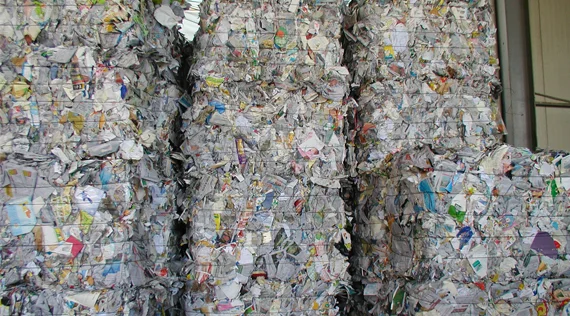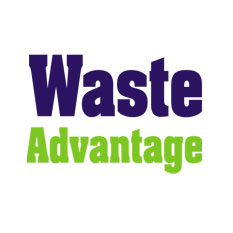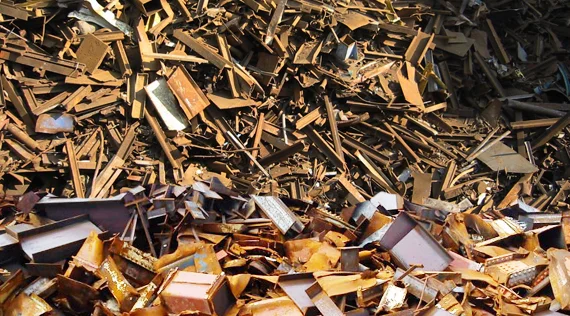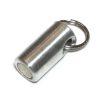Can We End Beverage Industry’s Use of Plastic?
Waste & Recycling | 2019-08-14 06:50:23
Today, plastic pollution is a huge problem — it has contaminated our oceans most of all.

SEATTLE (Waste Advantage): When was the last time you were able to purchase a soft drink in a reusable glass bottle? When was the last time you even saw a soft drink in a glass packaging? Today, single-use plastic packaging is still omnipresent, despite our increasing environmental awareness. According to a World Wide Fund for Nature study, an average person consumes 1,769 tiny plastic particles and fibers every week just from drinking water. That accumulates to around a half-pound of plastic every year!
And we aren’t the only ones feeling the impact of plastic. We might be the last link experiencing the results in the huge chain that makes up our environment. Unfortunately, the beverage industry plays a significant role in plastic pollution of the Earth. Let’s have a closer look at how plastic impacts our environment and whether we could turn the bleak trend around by going back to glass bottles.
In the 1960s, plastic waste was observed in the oceans for the first time, which ended the reputation of plastic materials as entirely positive and great to use. Even though plastic helped our industrial advancement, especially in the years after World War II, we did not have enough foresight to predict its environmental impact.
And it is dire, mostly because that plastic, made from synthetic materials not found in nature, can take forever to decompose on its own. Most plastic bottles take at least 450 years to biodegrade, and only if they weren’t made with Polyethylene Terephthalate (PET).
Today, plastic pollution is a huge problem — it has contaminated our oceans most of all. Toxins from plastic find their way into plankton, which is the base food of most marine ocean species. It travels through the entire food chain, ending up on our own tables.
But our air and land are also polluted. When plastic is burned to dispose of it, toxins are released into the air. While it waits for its turn to be disposed of in landfills, we end up needing more and more space for storing garbage.
According to Science, about 8 million metric tons are thrown into the ocean each and every year. This is the equivalent weight of approximately 25,000 Empire State buildings. Even with current recycling and conservation efforts, the amount of plastic in the oceans will increase 10 times by 2020 and by 2050 there will be more plastic in the oceans by weight than fish. Recently, a dead whale in the Philippines contained more than 88 pounds of plastic in its stomach. Has anyone asked what happens to that plastic when we eat the fish that live in our oceans?
The global annual production of plastic exceeded 350 million tons in 2013. By 2015, the world had produced 7.8 billion tons of plastic. Back in the day, single-use plastic seemed like a great idea — but we are overproducing it, drowning in it, and making the entire planet sick in the process. And it is time to re-think single use plastic beverages. Recycling has failed to fix the ultimate problem.
According to Greenpeace and the Breakfree from Plastics Movement the top four plastic polluters in the WORLD are, from highest to lowest, Coca Cola, PepsiCo, Nestle and Dannone.
This conversation is not simply about the birds and the bees or “fishees” in the ocean. This conversation is about the world in which human beings live and the net effect plastic has on human beings, current and future generations. It is impossible to argue that plastic is good for mankind. It is convenient and it is less expensive, but that does not make it acceptable. Food and Beverage companies need to take responsibility for the damage they are doing to promote their bottom line.
The beverage industry is one of the major players in the plastic packaging market — especially the companies that produce soft drinks, like Coca-Cola and PepsiCo. According to Greenpeace, Coca-Cola Company alone produced more than 100 billion plastic bottles in 2016. And if we compare this statistic to the data stating that over 90% of plastic isn’t recycled, it becomes easier to put the beverage industry plastic pollution into context.
In the earlier years, these big names in the industry committed to plastic, believing (or simply stating) that they would increase their efforts to reclaim and recycling it. However, with a lack of deposit systems and financial incentives to recycle, the system ended up being wasteful. Around 70% of bottles are never reclaimed, which leads to a low recycling rate. According to Euromonitor data, less than 7% of recycled bottles were turned into new bottles.
Beverage giants like Pepsi are aiming to start using biodegradable plastic. However, according to some experts, this will take a long time to accomplish, because the packaging must still be able to preserve the contents. What’s more, even biodegradable plastic can release damaging gases into the air, such as methane.
Courtesy: https://www.wasteadvantage.com
 By
By 



